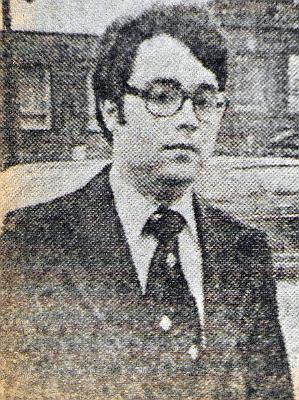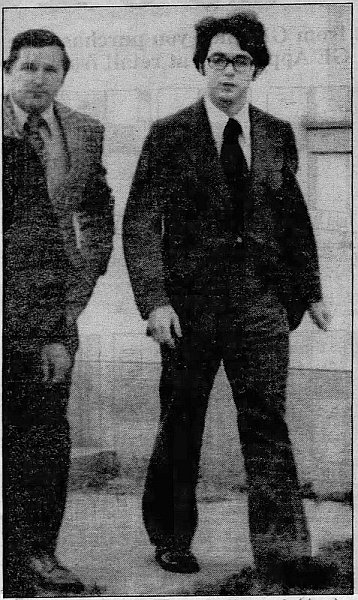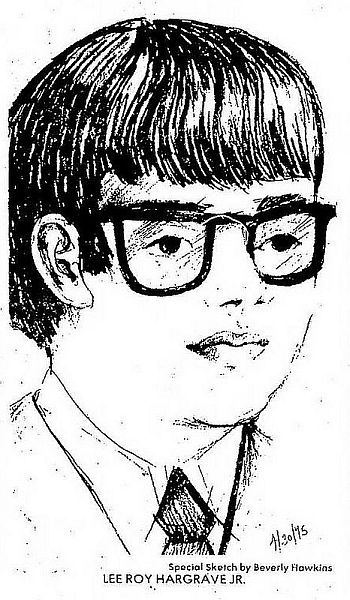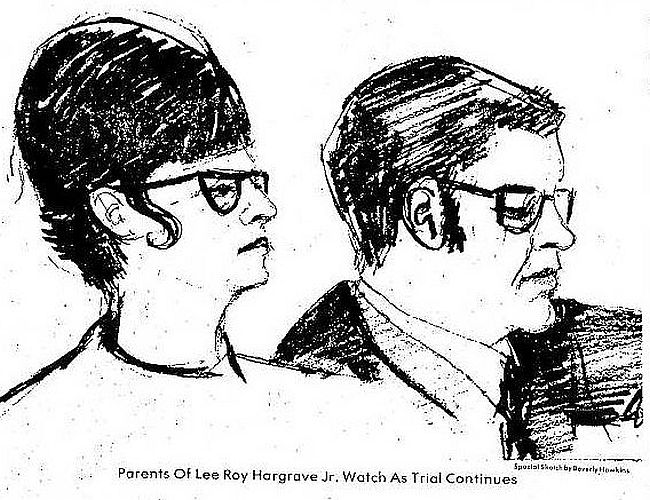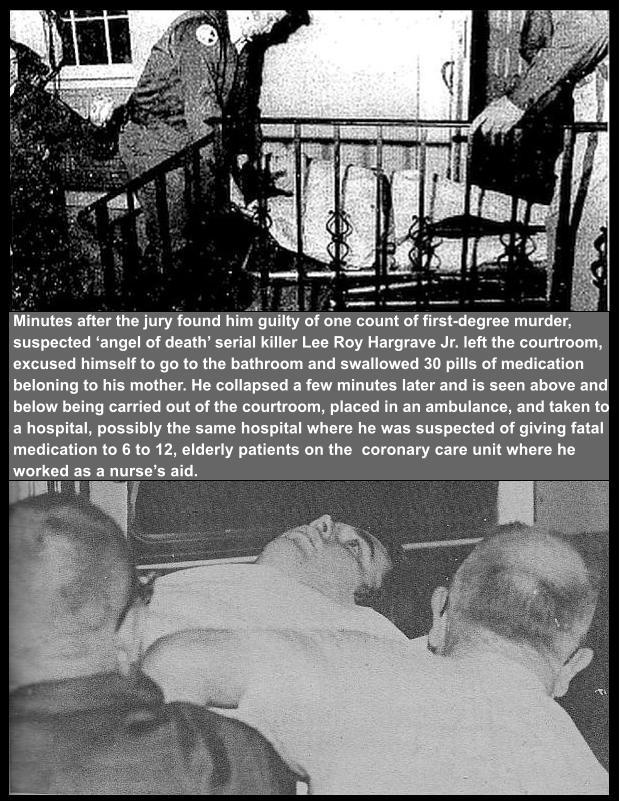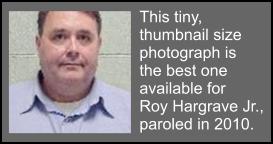Serial Killers Anonymous: Lee ‘Roy’ Hargrave Jr.
Released in 2010 after 35 years in prison.
Home | Serial Killers Anonymous, Short Feature Story | Serial Killers Anonymous: Lee ‘Roy’ Hargrave Jr.Released in 2010 after 35 years in prison.
“Angel of Death” – A type of serial killer, who is employed as caregiver and kills people under their care.
—yourdictionary.com
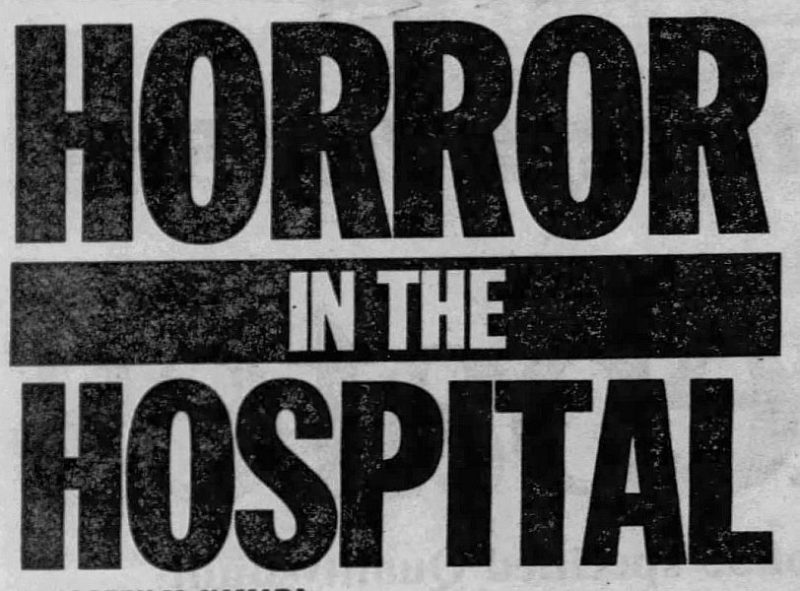
The headline above accompanied a retelling of this once famous case that appeared in a 1991 issue of the New York Daily News. A link to that article can be found at the end of this story.
Suspicious Deaths
In June 1974, administrative supervisors at Petersburg General Hospital in Petersburg, Virginia, were baffled by a sudden increase in patient deaths.
During a recent two-week period, twelve heart patients on the coronary care unit floor died unexpectedly. Although many of those twelve men and women were elderly, all of them were in the recovery unit, and the prognosis for each of them was good.
In those days, PGH was a seven-story hospital with 440 beds that served Petersburg, Hopewell, and Colonial Heights. A modern coronary care unit occupied one entire floor of the hospital. It was divided into two sections: one for intensive care of critically ill patients, and a larger section for recuperative care.
When hospital administrators and doctors examined the medical charts for all twelve, they could find no logical explanation for why they died. Although their prognosis was good, it was as if their hearts just stopped working—suddenly, and for no clear reason.
But twelve dead in two weeks was statistical impossible. They had to keep looking for a cause; something they all had in common. The found the first one by looking at the time of death; all twelve died between 11 p.m. and 7:00 in the morning.
At PGH, eleven o’clock at night to seven o’clock in the morning was known by all as, ‘the graveyard shift.’
When they cross-referenced employee schedules with the date, and time of death for those patients, they found one name that came up all twelve times–Lee ‘Roy’ Hargrave Jr. Going back further, they found even more instances where Hargrave was on duty the same night other patients died suddenly, and unexpectedly.
Not only was he there on those same nights, Hargrave was the one who called for a code blue in most of those cases.
———-Photo Gallery———-
———-Story Continues below———-
Lee “Roy” Hargrave Jr.
In 1974, Hargrave was a twenty-one-year-old nurse’s aide who once dreamed of becoming a doctor before he flunked out of college his second semester. High school friends and college classmates who knew him, described Hargrave as an affable young man but a loner who kept to himself mostly. They recalled he was interested in the occult, supernatural, and the Salem witchcraft trials.
During his short time at Randolph Macon College from 1971-72, a small nodule of unknown origin had grown on the left side of Hargrave’s neck. Doctor’s did not know what it was and didn’t seem to think it was serious. However, Hargrave told several classmates he had leukemia and was dying.
To encourage that belief, Hargrave had ‘fainting spells,’ missed classes often ‘for medical reasons,’ and wore long sleeve shirts to cover-up rubber tubes supposedly attached to his arms. However, this just attracted more attention since the tubes were clearly visible extending beyond his shirtsleeve.
In a 1974 interview, Hargrave’s parents told a reporter for the Petersburg Progress-Index their son did not have leukemia.
“But he apparently led others to believe he was dying,” Jim Greenfield wrote in his ‘sob-sister’ feature story. Greenfield dodged an explanation to why he did it, but others speculated Hargrave lied about having terminal cancer to cover up for his poor academic performance. In high school, he earned a D and an F over two semesters in chemistry (an important subject to learn for anyone wanting to become a medical doctor). His teacher described him as a quitter; when things got too tough, Harvgrave stopped trying.
During the summer of 1971, after he graduated high school and before attending the small, private college in Ashland, Virginia, Hargrave found a part-time job as a nurses-aid at Petersburg General Hospital. When Hargrave returned home from Ashland in 1972, he also returned to his old part-time position.
In Greenfield’s article for the Petersburg Progress-Index, he wrote that 1972 was a difficult time for the Hargrave family; young Roy’s mother was recently diagnosed with multiple sclerosis, and the plant where Roy Sr., was employed was having problems. Work was unsteady, which meant his paycheck was unsteady, and his wife, Mary C. Hargrave, needed medical treatment. The bills were piling up.
Young Hargrave was needed at home. His dream of returning to college to become a doctor was placed on indefinite hold.
Hargrave worked as a part-time nurses-assistant for two more years before the hospital offered him a full-time position in April 1974. Like many new hires to shift work, Hargrave was assigned to the graveyard shift, 11 p.m. to seven o’clock in the morning.
A few weeks later, patient mortality on the coronary unit slowing began to increase. Then, it spiked suddenly when twelve patients died during a two-week period in May and June 1974. That was the anomaly that caught the attention of hospital supervisors. Their internal review narrowed it down to Hargrave as having some sort of connection to those deaths.
But this was a hospital investigation, not a police one. They wanted to be one hundred percent confident in any action they took. During those last two weeks in June, Hargrave was ‘under surveillance,’ by his superiors. High-ranking nurses, doctors, and others were watching him carefully.
Not carefully enough, unfortunately.
During the last week of June, five more non-risk patients died overnight while Hargrave was on duty. They included John Edward Harris, 64, June 23; Martha Jane Avery, 80, June 25; Thomas Wesley Wray, 85; June 29, and Josephine L Thomas, 73, June 30.
It was the last one that got him.
Her death erased any doubts with hospital staff who “were stunned by her sudden and inexplicable demise,” a crime magazine later reported. Retired schoolteacher Josephine L. Thomas was in good physical condition, and strong for her age. Staff members did not regard her as particularly ill, and knew she would soon be released.
A nurse, who later testified against him, said: “that within two minutes of the drug-induced seizure which ended Miss Thomas’ life, Hargrave had gone down the hall of the progressive unit toward the patient’s room, and then was the only employee in that section of the unit.”
Hargrave had a special talent for being in the wrong place at the wrong time. Looking back over their records, hospital investigators calculated that Hargrave called for 26 of the last 31 “code blue” alerts. When a heart patient was dying or dead, he was the one who sounded the alarm 84 percent of the time. It was another statistical impossibility.
Later that morning, Hargrave was “laid-off” due to staff cutbacks, the hospital told him.
An investigation into the unexplained deaths progressed quietly, carried out by the Virginia Commonwealth Attorney and his assistant, as well as the state medical examiner and toxicologist, with the further cooperation of staff members at Petersburg Hospital. Law enforcement would not be involved until the very end.
Blood and tissue samples from Josephine Thomas were sent to the state lab where it was handled by the chief toxicologist. The results from the gas chromatograph revealed the killer’s secret weapon: Thomas died from a lethal dose of lidocaine, a drug that depresses activity of the heart muscle to the point it will stop moving. The 73-year-old retired schoolteacher was never prescribed lidocaine. In fact, a cardiologist would have no reason to prescribe a heart patient a medication that would lead to heart failure.
Arrest, More Victims, and Trial
HARGRAVE WAS INDICTED and arrested on August 14 for the murder of Josephine Thomas.
Over the next two months, the bodies of more patients who died that June were exhumed, and tests revealed five of them died from lethal doses of lidocaine. Hargrave was charged with first-degree murder in those cases as well. They included: John E. Harris, 64; Martha Avery, 84; Thomas Wesley Wray, 85; Robert Wyche; and Leonard Hudson Sr. He pleaded not guilty to all the charges.
Following thirty-five days of mental observation in a state hospital, in which his letters home to his parents were made public in newspapers, Hargrave’s trial for the first-degree murder of Josephine Thomas began on May 3, 1975.
The case against him was overwhelming with 29 prosecution witnesses testifying over six days. When Hargrave took the stand in his own defense, the prosecutor’s cross-examination boxed him into a corner and most of his answers consisted of “I don’t know,” and “I don’t recall.”
When asked if he had once told his cellmate that he had ‘killed elderly people for kicks,’ Hargrave answered, “I don’t remember.”
“You deny it, or don’t remember?” the prosecution asked again.
“I don’t remember,” Hargrave repeated.
In addition to hospital coworkers who testified they witnessed Hargrave doing or saying things suspicious things, two male patients also testified against him. In two separate incidents, Hargrave entered their room with no explanation, and asked them to roll over on their side. Doing so directed their attention away from their IV drip where Hargrave inject something into the tube. In those separate incidents, both men were suspicious of Hargrave, protested his presence, and turned to look to see what he was doing when they saw him inject the unknown substance into their IV.
A short time after he left those rooms, both men said the suffered medical complications that required the attention of a physician and several nurses.
On May 8, after two hours of deliberation, the jury found Lee Roy Hargrave Jr. guilty and the judge sentenced him to life in prison. Shortly after court recessed, Hargrave met with his attorney and parents in a small witness room to discuss an appeal. With a guard standing nearby, Hargrave entered a restroom and then returned thirty seconds later.
After a few minutes went by, he collapsed on his mother.
Hargrave was taken to the hospital and treated for a drug overdose. When he was in the bathroom, he swallowed approximately thirty pills of valium and Elavil, an anti-depressant. The medication belonged to his mother who took them for her multiple-sclerosis and depression.
He was never in any real danger.
In 1975, a sentence of “life in prison” did not mean “life in prison.” Hargrave’s life sentence actually meant he would be eligible for parole in fifteen years. He was never tried for the other five murders.
Parole and Seclusion
In November 2009, after serving thirty-five years in prison, the Virginia Parole Board granted parole to Lee Roy Hargrave Jr. according to the laws in place at the time of his conviction. He was quietly released on December 31, 2009. The parole board did not notify the media they had released a suspected serial-killer into the community until two months later.
Over the last twenty years, only one newspaper in the country has reported on this (suspected) serial killer—the same newspaper that serves the community he affected the most, the Petersburg Progress-Index.
Their first article on Hargrave’s release was published 60 days later, on March 4, 2010. Their front-page headline story retold the story for readers, and also shed more light on Hargrave’s peculiar hobbies.
He acknowledged at the trial that he had an interest in communicating with the dead, holding Ouija board sessions “in lieu of beer parties.” He also kept a list of the people who died in the coronary care unit.
A neighbor and close friend of Hargrave told the media during the trial that Hargrave had a longstanding interest in the occult and believed he had supernatural powers given to him by the “forces of evil.”
Others who knew Hargrave described him as a loner and confirmed his interest in the supernatural. But his mother told a reporter at the time that Hargrave was a normal young man who “especially enjoyed the little old ladies” when he worked at the hospital.
The Progress-Index, Mar 4, 2010
The March 4, 2010, article said no contact information for Roy Hargrave was released by the parole board, and the reporter was unable to locate the then 56 years-old convicted killer. The Virginia parole board assigned him to their district 41, which includes Hanover and Caroline counties. In 2010, it wasn’t clear why the parole board sent him to that particular district.
The answer to that question came in 2012 when Hargrave’s father died on March 18, in Ashland, Virginia, which is Hanover County. After serving bravely in World War II, Lee Roy Hargrave Sr. graduated from Randolph-Macon College in Ashland sometime in the early 1950s—the same school Roy Jr., was “separated from for academic deficiencies.”
Roy Sr., loved his son and always believed in him, and he was to say as much in death. In his short obituary that can be found online, it reads:
Hargrave, Lee Roy, Sr., 86, of Ashland, passed away on Sunday, March 18, 2012. He is survived by his wife of 61 years, Mary C. Hargrave; a son, Lee Roy Hargrave, Jr.; and his brother, Col. C. E. Hargrave (U.S. Army Ret.). He is also survived by his special children, Nicki and Mercedes (his cats). Mr. Hargrave was a U.S. Marine Vet serving at Iwo Jima during WWII. Funeral services were private at Forest Lawn Cemetery.
In 2015, Roy Sr.’s brother, mentioned in his obituary as a retired army Colonel, died that year. In his obituary available online, sister-in-law Mary C. Hargrave of Ashland; and nephew Lee R. Hargrave Jr. of Ashland are listed as survivors.
That was the last time suspect serial killer Roy Hargrave Jr.’s name is posted on the internet, or in digital newspaper archive services as of the time this article was published. There is also no record of either one of them passing away since named in the 2015 obituary. If mother and son are still alive, they are likely living together in their Ashland family home.
Although this case received national coverage in 1974 and 75, it appears as if only handful of people today remember this ‘angel of death’ suspected serial killer who was once charged with five other murders, and could have been responsible for 12 to 26 victims total.
For legal purposes, the HistoricalCrimeDetective.com blog’s position about Lee Roy Hargrave Jr., is he is a “suspected serial killer.” He has not been convicted of two or more murders, or confessed to any murder, in addition to his 1975 conviction.
Read More… Read this 1991 feature story from the New York Daily News.
—###—
True Crime Book: Famous Crimes the World Forgot Vol II, 384 pages, Kindle just $3.99, More Amazing True Crime Stories You Never Knew About! = GOLD MEDAL WINNER, True Crime Category, 2018 Independent Publisher Awards.
---
Check Out These Popular Stories on Historical Crime Detective
Posted: Jason Lucky Morrow - Writer/Founder/Editor, February 27th, 2019 under Serial Killers Anonymous, Short Feature Story.
Tags: 1970s, Serial Killer


